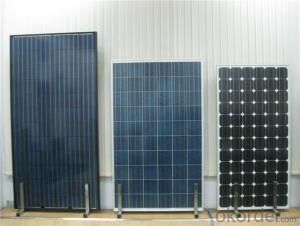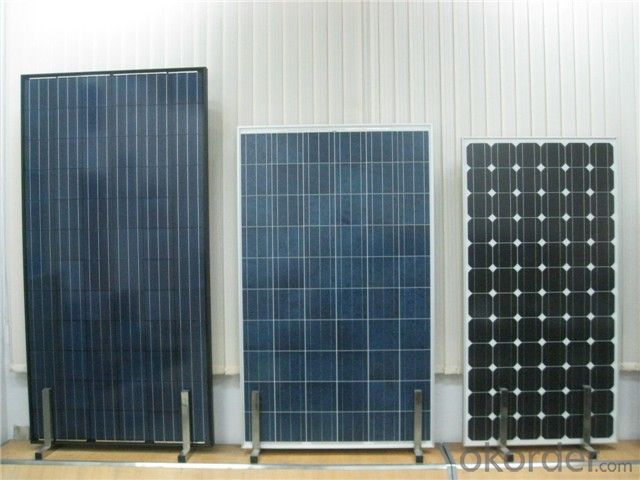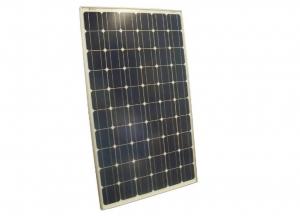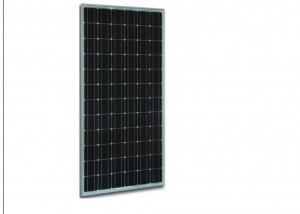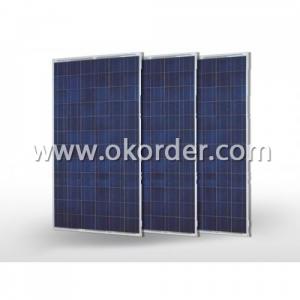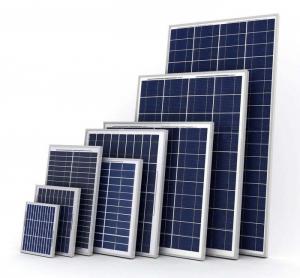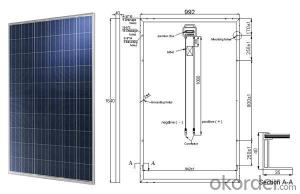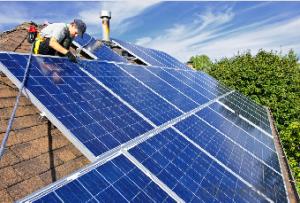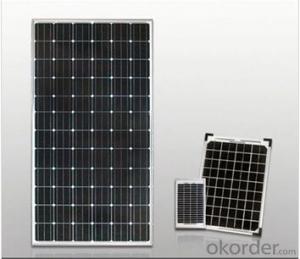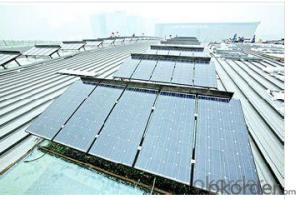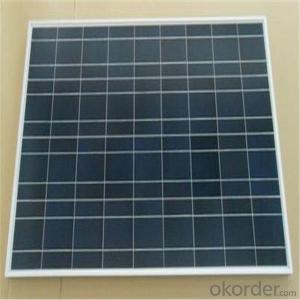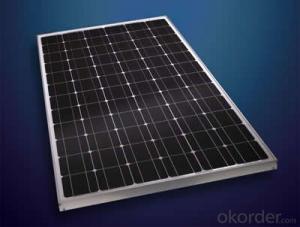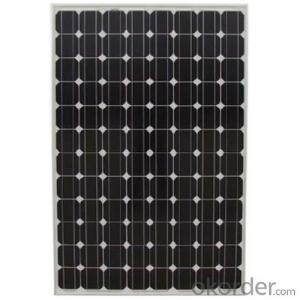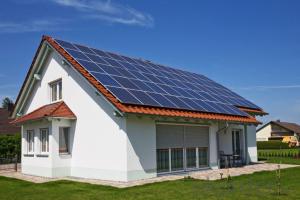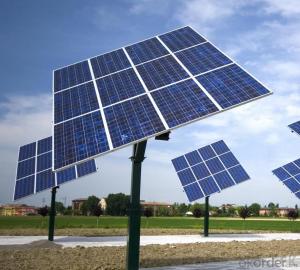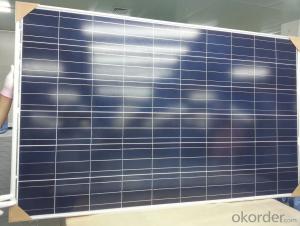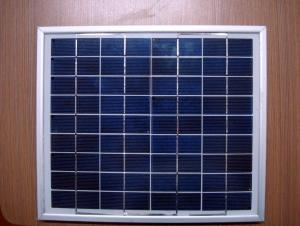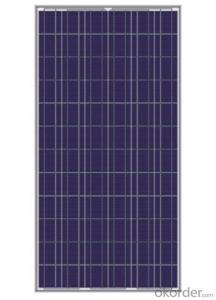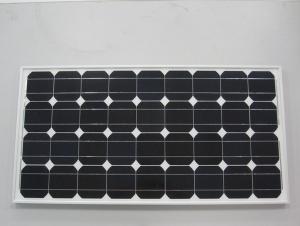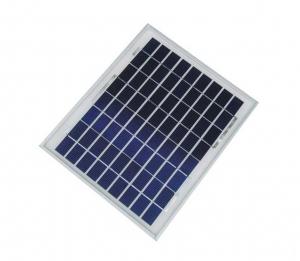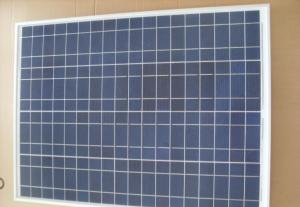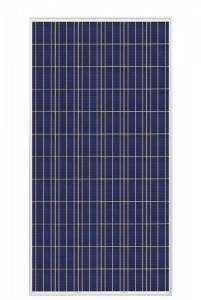Best Price on High Quality Poly Solar Module (20w - 300w) for Power Plant
- Loading Port:
- Tianjin
- Payment Terms:
- TT OR LC
- Min Order Qty:
- 100 watt
- Supply Capability:
- 10000 watt/month
OKorder Service Pledge
Quality Product, Order Online Tracking, Timely Delivery
OKorder Financial Service
Credit Rating, Credit Services, Credit Purchasing
You Might Also Like
Specification
Material:
Polycrystalline Silicon
Max. Power(W):
300
Number of Cells(pieces):
36
Size:
400*670*25mm
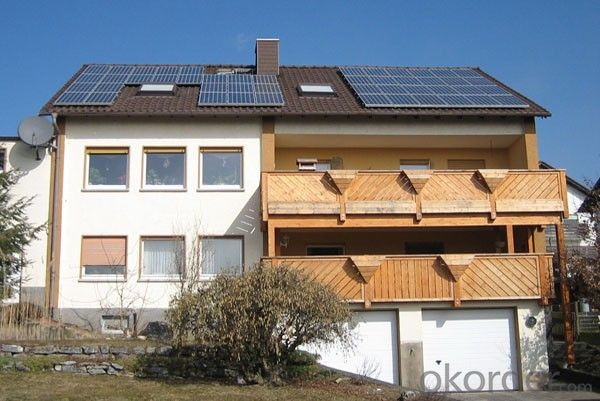
Polycrystalline cell efficiency 15 - 17% in Motech/Gintech or other brands.
Convenient location, near to Shenzhen Port & Guangzhou Port.
Price: Negotiable.
Quality Control:
100% panel power and EL test before package.
Module Warranty:
25 - year limited warranty of 80% power output;
10 - year limited warranty of 90% power output;
5 - year limited warranty of materials and workmanship.
| Electrical Characteristics | |||||||||||||||||||||||||||
| Model | GP-SP-010W-6P36 | GP-SP-020W-6P36 | GP-SP-030W-6P36 | GP-SP-035W-6P36 | GP-SP-040W-6P36 | GP-SP-045W-6P36 | |||||||||||||||||||||
| Max power (Pmax) | 10W | 20W | 30W | 35W | 40W | 45W | |||||||||||||||||||||
| Max power voltage (Vmp) | 18V± 3% | 18V± 3% | 18V± 3% | 18V± 3% | 18V± 3% | 18V± 3% | |||||||||||||||||||||
| Max power current (Imp) | 0.56A± 3% | 1.11A± 3% | 1.67A± 3% | 1.94A± 3% | 2.22A± 3% | 2.5A± 3% | |||||||||||||||||||||
| Open circuit voltage (Voc) | 21.6V± 3% | 21.6V± 3% | 21.6V± 3% | 21.6V± 3% | 21.6V± 3% | 21.6V± 3% | |||||||||||||||||||||
| Short circuit current (Isc) | 0.63A± 3% | 1.27A± 3% | 1.89A± 3% | 2.22A± 3% | 2.54A± 3% | 2.85A± 3% | |||||||||||||||||||||
| Cells | Polycrystalline | Polycrystalline | Polycrystalline | Polycrystalline | Polycrystalline | Polycrystalline | |||||||||||||||||||||
| Number of cells | 36 | 36 | 36 | 36 | 36 | 36 | |||||||||||||||||||||
| Output tolerance | ± 5% | ± 5% | ± 5% | ± 5% | ± 5% | ± 5% | |||||||||||||||||||||
| Max system voltage | 1000V | ||||||||||||||||||||||||||
| Test conditions: | AM1.5, 25º C, 1000W/M 2, | ||||||||||||||||||||||||||
| Temperature Coefficient: | Isc | 0.08%/º C | |||||||||||||||||||||||||
| Voc | - 0.32%/º C | ||||||||||||||||||||||||||
| Pmax | -0.38%/º C | ||||||||||||||||||||||||||
| Dimension (mm) | Length | 310 | 359 | 400 | 440 | 490 | 540 | ||||||||||||||||||||
| Width | 359 | 500 | 670 | 675 | 675 | 675 | |||||||||||||||||||||
| Height | 18 | 25 | 25 | 30 | 30 | 30 | |||||||||||||||||||||
| Weight(kg): | 1.2 | 2.5 | 3.6 | 4.2 | 4.8 | 5.4 | |||||||||||||||||||||
| Electrical Characteristics | |||||||||||||||||||||||||||
| Model | GP-SP-050W-6P36 | GP-SP-055W-6P36 | GP-SP-060W-6P36 | GP-SP-065W-6P36 | GP-SP-070W-6P36 | GP-SP-075W-6P36 | |||||||||||||||||||||
| Max power (Pmax) | 50W | 55W | 60W | 65W | 70W | 75W | |||||||||||||||||||||
| Max power voltage (Vmp) | 18V± 3% | 18V± 3% | 18V± 3% | 18V± 3% | 18V± 3% | 18V± 3% | |||||||||||||||||||||
| Max power current (Imp) | 2.78A± 3% | 3.06A± 3% | 3.33A± 3% | 3.61A± 3% | 3.89A± 3% | 4.17A± 3% | |||||||||||||||||||||
| Open circuit voltage (Voc) | 21.6V± 3% | 21.6V± 3% | 21.6V± 3% | 21.6V± 3% | 21.6V± 3% | 21.6V± 3% | |||||||||||||||||||||
| Short circuit current (Isc) | 3.17A± 3% | 3.49A± 3% | 3.81A± 3% | 4.12A± 3% | 4.44A± 3% | 4.76A± 3% | |||||||||||||||||||||
| Cells | Polycrystalline | Polycrystalline | Polycrystalline | Polycrystalline | Polycrystalline | Polycrystalline | |||||||||||||||||||||
| Number of cells | 36 | 36 | 36 | 36 | 36 | 36 | |||||||||||||||||||||
| Output tolerance | ± 5% | ± 5% | ± 5% | ± 5% | ± 5% | ± 5% | |||||||||||||||||||||
| Max system voltage | 1000V | ||||||||||||||||||||||||||
| Test conditions: | AM1.5, 25º C, 1000W/M 2, | ||||||||||||||||||||||||||
| Temperature Coefficient: | Isc | 0.08%/º C | |||||||||||||||||||||||||
| Voc | - 0.32%/º C | ||||||||||||||||||||||||||
| Pmax | -0.38%/º C | ||||||||||||||||||||||||||
| Dimension (mm) | Length | 600 | 645 | 700 | 750 | 800 | 850 | ||||||||||||||||||||
| Width | 675 | 675 | 675 | 675 | 675 | 675 | |||||||||||||||||||||
| Height | 30 | 35 | 35 | 35 | 35 | 35 | |||||||||||||||||||||
| Weight(kg): | 6.0 | 6.6 | 7.2 | 7.8 | 8.4 | 9.0 | |||||||||||||||||||||
| Model | GP-SP-080W-6P36 | GP-SP-085W-6P36 | GP-SP-090W-6P36 | GP-SP-095W-6P36 | GP-SP-100W-6P36 | GP-SP-110W-6P36 | |||||||||||||||||||||
| Max power(Pmax) | 80W | 85W | 90W | 95W | 100W | 110W | |||||||||||||||||||||
| Max power voltage (Vmp) | 18V± 3% | 18V± 3% | 18V± 3% | 18V± 3% | 18V± 3% | 18V± 3% | |||||||||||||||||||||
| Max power current (Imp) | 4.44A± 3% | 4.72A± 3% | 5.0A± 3% | 5.28A± 3% | 5.56A± 3% | 6.11A± 3% | |||||||||||||||||||||
| Open circuit voltage (Voc) | 21.6V± 3% | 21.6V± 3% | 21.6V± 3% | 21.6V± 3% | 21.6V± 3% | 21.6V± 3% | |||||||||||||||||||||
| Short circuit current (Isc) | 5.07A± 3% | 5.25A± 3% | 5.71A± 3% | 6.02A± 3% | 6.34A± 3% | 6.98A± 3% | |||||||||||||||||||||
| Cells | Polycrystalline | Polycrystalline | Polycrystalline | Polycrystalline | Polycrystalline | Polycrystalline | |||||||||||||||||||||
| Number of cells | 36 | 36 | 36 | 36 | 36 | 36 | |||||||||||||||||||||
| Output tolerance | ± 5% | ± 5% | ± 5% | ± 5% | ± 5% | ± 5% | |||||||||||||||||||||
| Max system voltage | 1000V | ||||||||||||||||||||||||||
| Test conditions | AM1.5, 25º C, 1000W/M 2, | ||||||||||||||||||||||||||
| Temperature Coefficient: | Isc | 0.08%/º C | |||||||||||||||||||||||||
| Voc | - 0.32%/º C | ||||||||||||||||||||||||||
| Pmax | -0.38%/º C | ||||||||||||||||||||||||||
| Dimension (mm) | Length | 904 | 955 | 1010 | 1060 | 1130 | 1210 | ||||||||||||||||||||
| Width | 675 | 675 | 675 | 675 | 675 | 675 | |||||||||||||||||||||
| Height | 35 | 35 | 35 | 35 | 35 | 35 | |||||||||||||||||||||
| Weight(kg): | 8.8 | 9.4 | 10 | 10.5 | 11.5 | 12 | |||||||||||||||||||||
| Electrical Characteristics | |||||||||||||||||||||||||||
| Model | GP-SP-115W-6P36 | GP-SP-120W-6P36 | GP-SP-125W-6P36 | GP-SP-130W-6P36 | GP-SP-135W-6P36 | ||||||||||||||||||||||
| Max power(Pmax) | 115W | 120W | 125W | 130W | 135W | ||||||||||||||||||||||
| Max power voltage (Vmp) | 18V± 3% | 18V± 3% | 18V± 3% | 18V± 3% | 18V± 3% | ||||||||||||||||||||||
| Max power current (Imp) | 6.39A± 3% | 6.67A± 3% | 6.94A± 3% | 7.22A± 3% | 7.5A± 3% | ||||||||||||||||||||||
| Open circuit voltage (Voc) | 21.6V± 3% | 21.6V± 3% | 21.6V± 3% | 21.6V± 3% | 21.6V± 3% | ||||||||||||||||||||||
| Short circuit current (Isc) | 7.19A± 3% | 7.61A± 3% | 7.93A± 3% | 8.24A± 3% | 8.45A± 3% | ||||||||||||||||||||||
| Cells | Polycrystalline | Polycrystalline | Polycrystalline | Polycrystalline | Polycrystalline | ||||||||||||||||||||||
| Number of cells | 36 | 36 | 36 | 36 | 36 | ||||||||||||||||||||||
| Output tolerance | ± 5% | ± 5% | ± 5% | ± 5% | ± 5% | ||||||||||||||||||||||
| Max system voltage | 1000V | ||||||||||||||||||||||||||
| Test conditions | AM1.5, 25º C, 1000W/M 2, | ||||||||||||||||||||||||||
| Temperature Coefficient: | Isc | 0.08%/º C | |||||||||||||||||||||||||
| Voc | - 0.32%/º C | ||||||||||||||||||||||||||
| Pmax | -0.38%/º C | ||||||||||||||||||||||||||
| Dimension (mm) | Length | 1278 | 1320 | 1370 | 1425 | 1490 | |||||||||||||||||||||
| Width | 675 | 675 | 675 | 675 | 675 | ||||||||||||||||||||||
| Height | 35 | 35 | 35 | 35 | 35 | ||||||||||||||||||||||
| Weight(kg): | 12.8 | 14.2 | 14.8 | 15.1 | 15.5 | ||||||||||||||||||||||
- Q: Can solar panels be installed on data centers?
- Yes, solar panels can be installed on data centers. In fact, many data centers are incorporating solar power as a sustainable energy source to reduce their carbon footprint and lower energy costs. The large, flat rooftops of data centers provide ample space for solar panel installations, making it a viable option for generating clean and renewable energy for these facilities.
- Q: My washer is 20 volts 60 gz,9.6 amps. The solar panels I am looking at are: Sharp ND-208U Solar Panels (208 Watt) List Price $,479.99 Only $,049.99 Sharp Solar Panels (208 Watt) List Price $,352.99 Only $,040.99 If I buy that will it be enough to run my washer?
- Don't you think it kinda depends on the panels? It's not like they're all one size. The A/C units are going to take significant power when in use as will an electric clothes dryer which you failed to mention. And we also have no earthly idea where you live in order to know how many hours of sun you'll be able to rely upon or how frequently you'll need to cool or what the square footage is you're cooling. Are you intending to live completly off grid? If so you'll want to be concerned with battery (which is cost prohibitive) or some other sort of back up for times when the sun isn't out.
- Q: Can solar panels be used in areas with high snowfall?
- Yes, solar panels can be used in areas with high snowfall. However, it is important to take certain factors into consideration. Proper design and installation can ensure that snow does not accumulate on the panels and affect their performance. Additionally, regular maintenance and snow removal may be required to maximize the efficiency of solar panels in snowy conditions.
- Q: Can solar panels be used to power a theme park?
- Yes, solar panels can be used to power a theme park. Solar energy is a renewable and sustainable source of power that can be harnessed to meet the energy needs of various establishments, including theme parks. By installing a sufficient number of solar panels, a theme park can generate enough electricity to power rides, lighting, and other facilities, while also reducing its carbon footprint and operating costs.
- Q: okay so im lookin 4 an article which explains how practical, wokable, feasible solar panels are. only positive points please :) give me the link. PLZ HELP!!!!
- Solar Panels are practical because they provide electricity to your home directly avoiding the rates paid to the utility. They are pay themselves off in 5 years or less and supply an income stream in NJ for 5 years!
- Q: i need to make a mini-solar car which shouldn't cost much. it's for my science project. for now, i just found out how to make a solar panel using copper oxide, but it does not generate enough power to power up the engine of the toy car [ the small engine they used in the toys, like from TAMIA]
- Have okorder . This will absolutely save yourself!
- Q: Can solar panels be used for powering outdoor recreational vehicles?
- Yes, solar panels can be used for powering outdoor recreational vehicles such as RVs, campers, and boats. They provide a convenient and eco-friendly way to generate electricity for various appliances and systems in these vehicles, including lighting, refrigeration, heating, and charging electronic devices. Solar panels can harness the sun's energy to charge batteries, which can then be used to power the vehicle's electrical needs, making it a sustainable and cost-effective option for outdoor enthusiasts.
- Q: Maximum size of solar panel i have to use is - 8 * 5 feet - this is the limitation given to us.
- A short answer is: 500 watt hours can be obtained with a 3 foot by 3 foot photovoltac panel in any 24 hour period with average conditions. Some 24 hour periods will fall far short of 300 watt hours even with the 5*8 foot panel, but a battery that stores several thousand watt hours, will likely give you 300 amp hours 362 days per year, with the 5*8 panel except very unfavorable locations such as Nome, Alaska, USA in December, and January. Nome is quite favorable Spring and Summer if you rotate your panel to keep it facing the sun up to 24 hours per day. Neil
- Q: what are the main minerals that are used in making solar panels. and where in the world are those minrelas usually found
- Heating panels have aluminum for the frame, glass for the top, copper pipes running through them, and possibly some plastic parts. The raw materials are easily obtained. Copper is the most difficult to get probably, but it's not all that rare, since we used to make pennies out of it. A solar electric panel is similar, with the copper used for wires and interconnect instead of pipes. The actual solar cells commonly used are almost completely pure silicon, which is abundant worldwide. There are traces of other elements in the silicon like boron, arsenic or phosphorous - these are also inexpensive, and easy to get.
- Q: I am planning to buy some solar panels for my cabin and i want to be able to store the electricity. what kind of batteries should i get? i will be running simple things like a tv and radio. where can i buy these batteries? where should i look for the best batteries?
- If you will be storing them outdoors, you can use auto batteries. Indoors, use sealed marine batteries. Number and size depends on your needs. You will need a charge controller between the solar panels and the batteries to get the maximum power out of the array and to avoid damage to the batteries. And you will need an inverter to convert the 2 or 24 volts to 20 or 240 VAC. One large lead acid battery will supply about 000 watt-hours of energy, enough for 200 watts for 5 hours. You have to look at your loads and decide on how many batteries you need. Frequently it is cheaper to buy new appliances that use less power, as that power difference can save a lot of money in batteries, inverter, charge controller and solar panels. But it sounds like a few thousand watt-hours will be enough, or 2 large batteries. The real limiting factor is how much money you want to spend for the solar panels themselves. .
Send your message to us
Best Price on High Quality Poly Solar Module (20w - 300w) for Power Plant
- Loading Port:
- Tianjin
- Payment Terms:
- TT OR LC
- Min Order Qty:
- 100 watt
- Supply Capability:
- 10000 watt/month
OKorder Service Pledge
Quality Product, Order Online Tracking, Timely Delivery
OKorder Financial Service
Credit Rating, Credit Services, Credit Purchasing
Similar products
Hot products
Hot Searches
Related keywords
